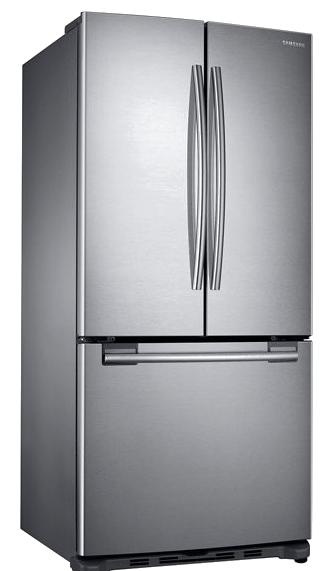Refrigerators keep food fresh and cold, preventing spoilage. They come in various sizes and styles, offering features like automatic defrosting, water dispensers, and energy-efficient cooling technology.
Specifications
Primary Function
Temperature Control: Refrigerators are designed to maintain a cool temperature (usually between 35°F and 38°F), slowing down the growth of bacteria and preserving the freshness of food.
Prevent Spoilage: By keeping food at a consistently low temperature, refrigerators prevent spoilage, extending the shelf life of perishable items like fruits, vegetables, dairy, and meat.
Types of Refrigerators
Top Freezer: The classic refrigerator model, where the freezer is located at the top and the fridge section is below. This style is space-efficient and provides easy access to fresh food.
Bottom Freezer: In this model, the freezer is located at the bottom, offering easier access to fresh food without bending down.
Side-by-Side: Features two vertical compartments—freezer and refrigerator—next to each other. This model provides easy access to both sections but may offer less storage space for large items.
French Door: Combines a bottom freezer with side-by-side doors for the refrigerator section. This model is known for its modern design and spacious interior.
Compact Refrigerators: Smaller in size, ideal for apartments, dorms, or secondary spaces like offices and garages. They offer basic refrigeration with limited storage capacity.
Cooling and Energy Efficiency
Energy-Efficient Cooling: Modern refrigerators use advanced cooling technology to reduce energy consumption, with Energy Star-certified models offering improved energy savings.
Inverter Technology: Some refrigerators are equipped with inverter compressors, which adjust the cooling power based on the temperature inside the fridge, offering consistent cooling while saving energy.
Automatic Defrosting: Many models include an automatic defrost system, which eliminates the need for manual defrosting, reducing ice buildup and maintaining efficient cooling.
Storage and Organization
Adjustable Shelves: Many refrigerators feature adjustable shelves that can be moved to accommodate larger or bulkier items, offering greater flexibility in organizing the interior.
Crisper Drawers: Specifically designed for fruits and vegetables, crisper drawers maintain optimal humidity levels to keep produce fresh for longer.
Door Storage: The refrigerator door often includes storage bins for items like condiments, sauces, or beverages, making them easily accessible.
Water and Ice Dispensers
Water Dispensers: Many modern refrigerators are equipped with built-in water dispensers on the door, providing easy access to chilled water.
Ice Makers: Automatic ice makers are available in many models, offering a steady supply of ice cubes or crushed ice without the need for ice trays.
Filtered Water: Some refrigerators come with an internal water filtration system, ensuring that the water dispensed is clean and free of contaminants.
Smart Features and Connectivity
Wi-Fi Connectivity: Some refrigerators come with smart features that allow users to connect their fridge to their smartphone or home network. Features can include remote temperature control, alerts for open doors, and the ability to check the status of the fridge from anywhere.
Touchscreen Displays: Some high-end models include a touchscreen display that provides information about the fridge’s status, such as temperature, filter status, and even grocery lists or recipes.
Voice Control: Integration with smart home systems (e.g., Amazon Alexa or Google Assistant) allows users to control the fridge with voice commands.
Noise and Operation
Quiet Operation: Modern refrigerators are designed to operate quietly, with noise levels as low as 35-40 dB, making them ideal for open-concept kitchens or spaces where noise reduction is important.
Vibration Reduction: Advanced refrigerators often include vibration-reduction technology, ensuring that the appliance operates smoothly without disturbing surrounding areas.
Design and Aesthetic
Finish Options: Refrigerators come in various finishes, including stainless steel, matte black, white, and custom panel-ready options, allowing users to match the appliance with their kitchen decor.
Sleek and Modern Designs: Many models feature clean lines, minimalist designs, and hidden handles for a sleek, contemporary look.
Key Considerations
Size and Capacity: When selecting a refrigerator, it is important to consider the size of your kitchen and your storage needs. Larger families or those who entertain often may need a fridge with higher capacity.
Installation: Proper installation is important for ensuring optimal performance. Refrigerators should be placed in well-ventilated spaces, and their doors should open freely without obstruction.
Maintenance: Regular maintenance, such as cleaning the coils, changing the water filter, and checking the door seals, can help maintain the fridge’s performance and extend its lifespan.
